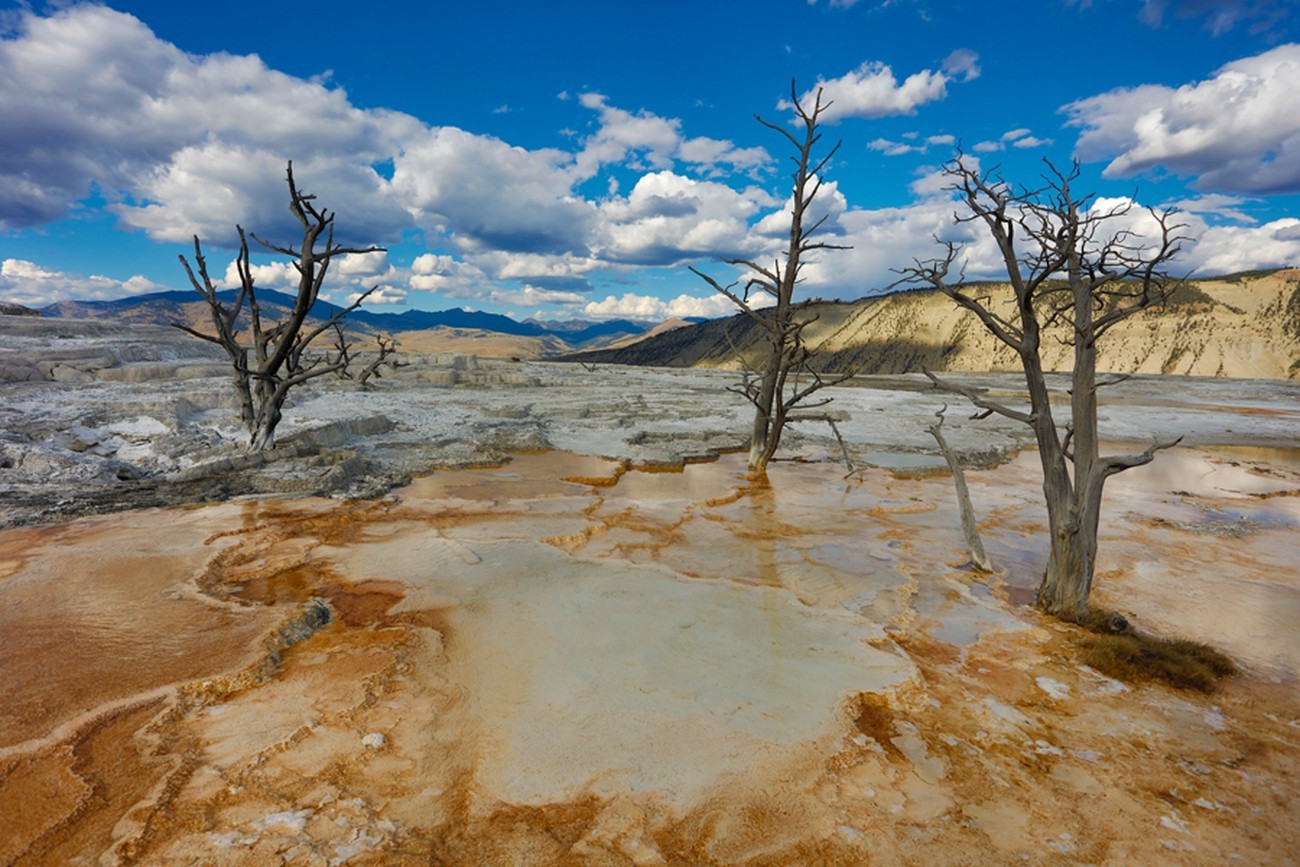Yellowstone National Park is one the most popular National Parks, getting more than a million visitors a year, including our judge for this photo contest, photographer and author Rick Sammon. Yellowstone offers a variety of landscape and wildlife photo opportunities – but in the park you will actually see more “Don’t feed the animals” signs than you will see animals.

In this post Rick will share some of his favorite Yellowstone images, along with some tips on how you can make great pictures, rather than simply take pictures.
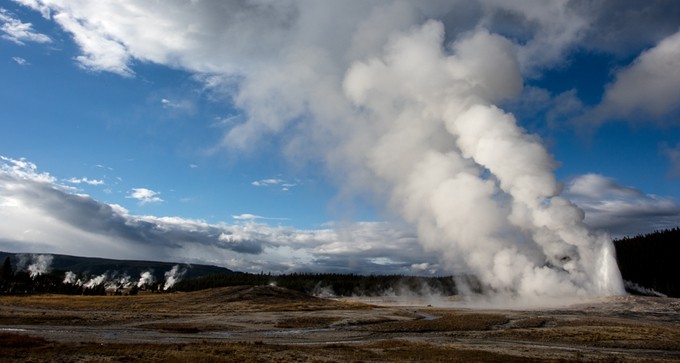
Go wide.
Most visitors to Yellowstone want to get a great shot of Old Faithful, the iconic image of the park. The result is a tight shot of the world famous geyser. For a more creative image, go wide and include several of the geysers in the background. When composing your image, make sure you don’t crop off the billowing steam at the top of the geyser. Also, be sure to have your camera’s highlight alert activated so you don’t overexpose any highlights, which is easy to do when photographing steam against a dark sky.

Pack a polarizing filter.
You’ll need a polarizing filter to see through the beautiful blue water at some of the geysers. For the clearest view of the water, time your shot so there is as little steam as possible in your photograph. That means watching the direction of the wind. When photographing around geysers, always have a lens cleaning cloth handy to keep your lens clean while shooting around the steam. Also, don’t change lenses in steaming situations. That steam can cause severe damage to your camera’s mirror and image sensor.

Use your camera like a drone.
I photographed this relative small geyser near Old Faithful while setting my camera on Live View, leaning over a railing, and holding my camera so I got a somewhat overhead view. When photographing, changing the height and angle of your camera, even by a few inches, can make a big difference in your photographs.

Explore.
I took this photograph at the top of Mammoth Springs. It’s a few minutes drive from the main parking lot – a spot that not all tourists visit. Where ever you go in the park, explore nearby areas and look for unique photo opportunities.
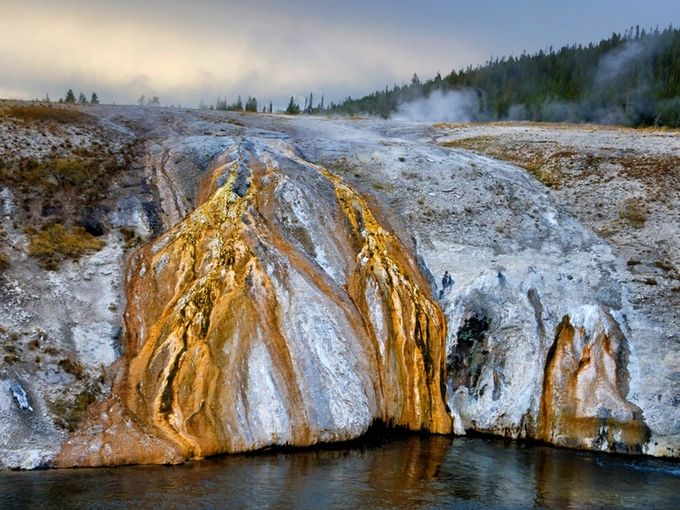
Try HDR.
In high-contrast situations, try HDR. While photographing this sunset scene near Old Faithful, I use the in-camera HDR on my Canon 5Ds, setting the mode to Art Vivid.

Pack a telephoto zoom.
You will need your wide-angle zoom lenses for landscapes, as illustrated by the photographs above, mostly taken with my Canon 17-40mm lens. For wildlife, you’ll need a telephoto zoom. Here I used my Canon 100-400mm IS zoom on my Canon 5Ds. I photographed this black bear from the road, on which traffic was virtually stopped with tourists trying to take pictures. And speaking of bears, having bear spray handy is a good idea . . . a very good idea.
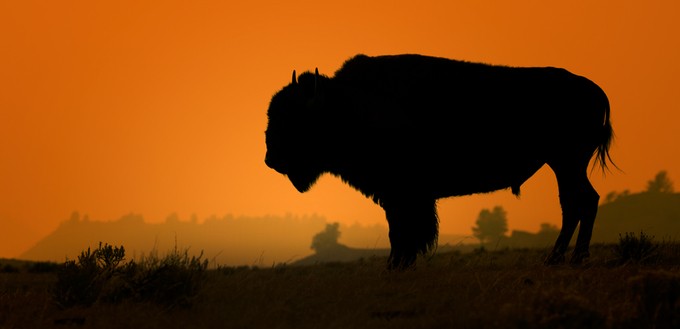
You snooze your loose.
Get up early and stay out late. Capture the beautiful light of early morning and late afternoon. Shoot silhouettes. If you don’t get great color, you can always add it, as I did, in Lightroom or with a plug-in.
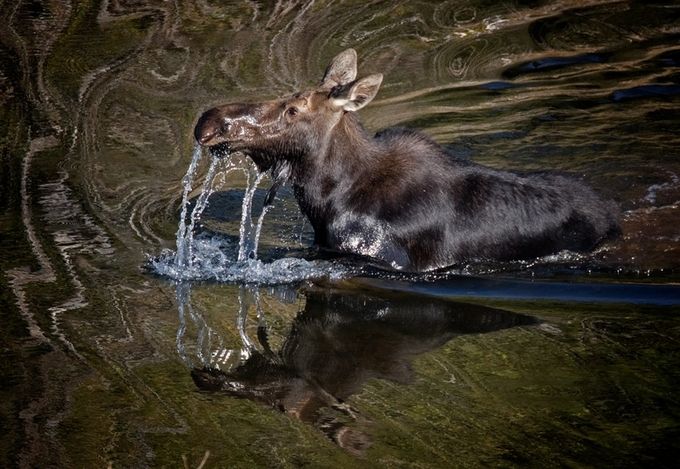
Always be ready and always patient.
You will see wildlife in the park. Always have your camera handy and always be patient. After we spotted this moose, we waited about 20 minutes for it to walk out of the dense foliage into open water. Remember, in wildlife photography, if the eyes are not in focus and well lit, you have missed the shot . . . in most cases.
Don’t forget the Instagram shot.
Sure, you want to get great landscape and wildlife photographs in Yellowstone. But don’t forget to get the fun people pictures and Instagram pictures. I took this picture of my wife Susan late one afternoon as we explored the walkways around Old Faithful. Out of all the images in this post, guess which one is her favorite – and which one is the most popular on Instagram. To add impact to this scene, I converted my color file to black and white using Macphun’s Tonality Pro. I hope you have fun exploring Yellowstone and submitting your pictures for this contest. I look forward to seeing your images – and don’t forget the bear spray.

Explore the light,
Rick
Rick Sammon is the author of 37 books. His latest book is Evolution of an Image –a behind-the scenes look at the creative photographic process.


